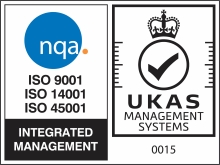Disconnectors (also known as Isolators) are devices which are generally operated off-load to provide isolation of main plant items for maintenance, or to isolate faulted equipment from other live equipment. Open terminal disconnectors are available in several forms for different applications.
At the lower voltages single break types are usual with either ‘rocker’ type or single end rotating post designs being predominant.
At higher voltages, rotating centre post, double end rotating post, vertical break and pantograph type disconnectors are more common. Disconnectors are usually interlocked with the associated circuit breaker to prevent any attempt being made to interrupt load current.
How do Disconnectors Work?
Disconnectors are not designed to break fault current although some designs will make fault current. Most disconnectors are available with either a manual drive mechanism or motor operated drive mechanism and the appropriate drive method must be selected for a particular disconnector in a particular substation, e.g. in a remotely controlled unmanned double busbar substation the busbar selector disconnectors would be motor operated to allow ‘on load’ busbar changes without a site visit being required. Disconnector mechanisms incorporate a set of auxiliary switches for remote indication of disconnector position, electrical interlocking and current transformer switching for busbar protection.
Earthing switches are usually associated and interlocked with disconnectors and mounted on the same base frame. They are driven by a separate, but similar, mechanism to that used for the disconnector. This arrangement avoids the need for separate post insulators for the earth switch and often simplifies interlocking. Normally earth switches are designed to be applied to dead and isolated circuits and do not have a fault making capability, however special designs are available with fault making capability if required.
Installations and Types
The enhanced Acrastyle design is the result of a collaboration between Acrastyle and its parent company S&S Power Switchgear in India. S&S Power Switchgear has in excess of 35,000 units installed worldwide and Acrastyle have been responsible for over 300 installations in the UK and Ireland.
Attributes of the enhanced design include; manual or motor driven operation, mechanical, electrical or fortress driven interlocks, freestanding or with supporting structures, unique turn and twist movement, self-cleaning, low operating torque, three phases, integral or free standing earth switches, line discharging and bus transfer contacts.
Disconnectors are available in the range of 12kV to 420kV in either Centre break, Double break or Pantograph configurations. The enhanced design is low maintenance, quick to install, simple to commission, withstands hostile environments, compatible with old systems, supplied with insulators and are waterproof and vandal proof.
Factory Set Up and Testing
Acrastyle design and fully construct every disconnector system in their factory in Ulverston. Testing ensures the torque, alignments, pressures, phase interconnections, and interlocks are in full working order. Once the quality of the product satisfies the engineering staff, they dismantle the system and prepare it for delivery. This enables the customer to install the disconnectors effectively and efficiently on arrival.
Before putting into service, Acrastyle engineers will oversee the final installation to make sure the customer experiences successful performance and validates the warranty. If you require Acrastyle to manage the whole installation, a group of engineers will visit your site and complete the task for you. They will also provide training on how to use the system and carry out routine maintenance.
If you would like to find out more about our disconnectors and the services we provide please contact us here.


.svg)


